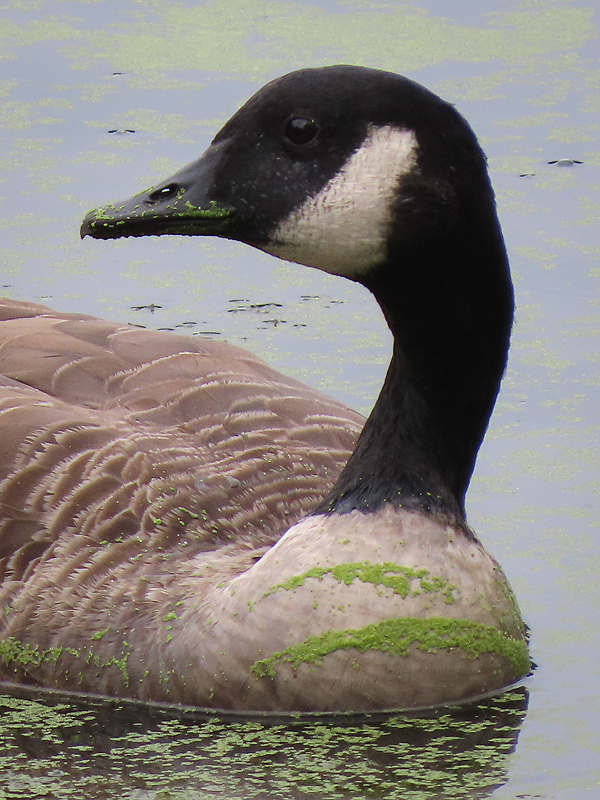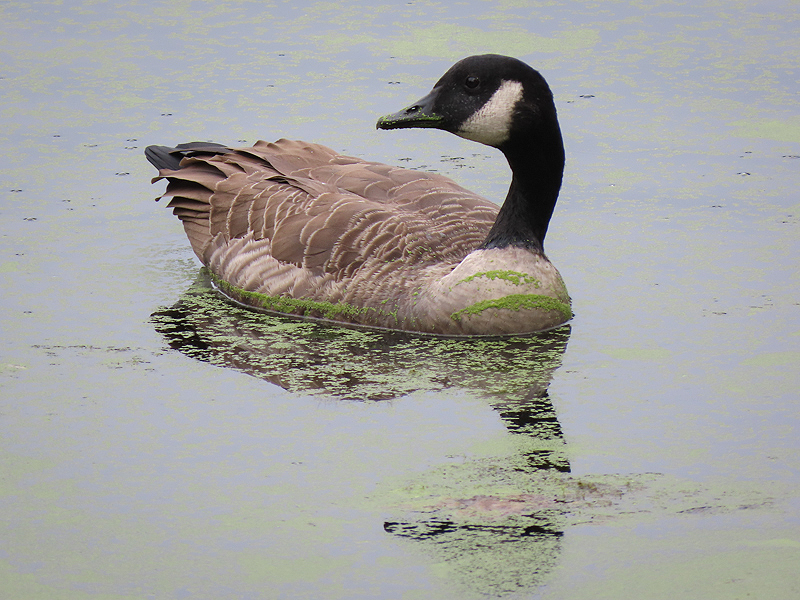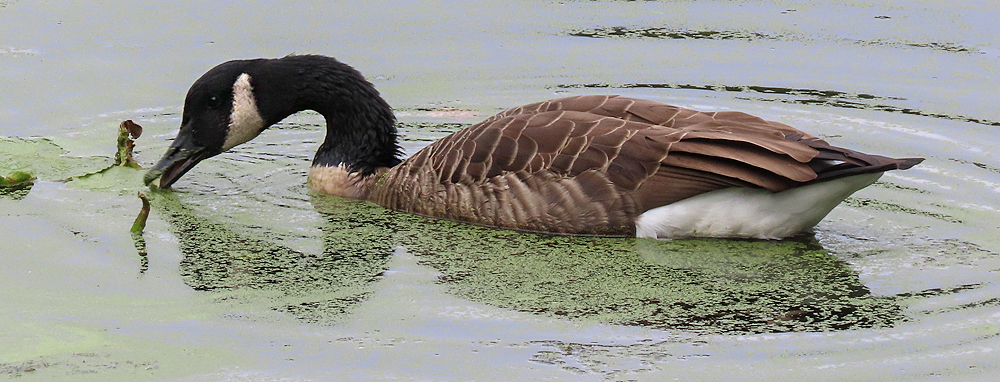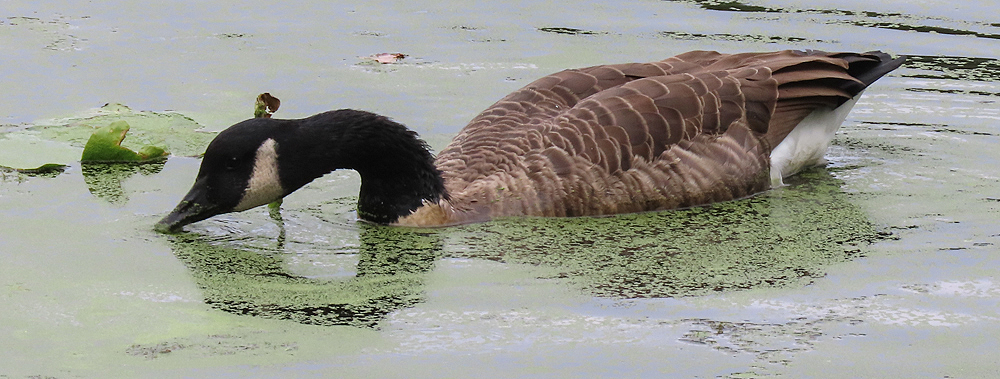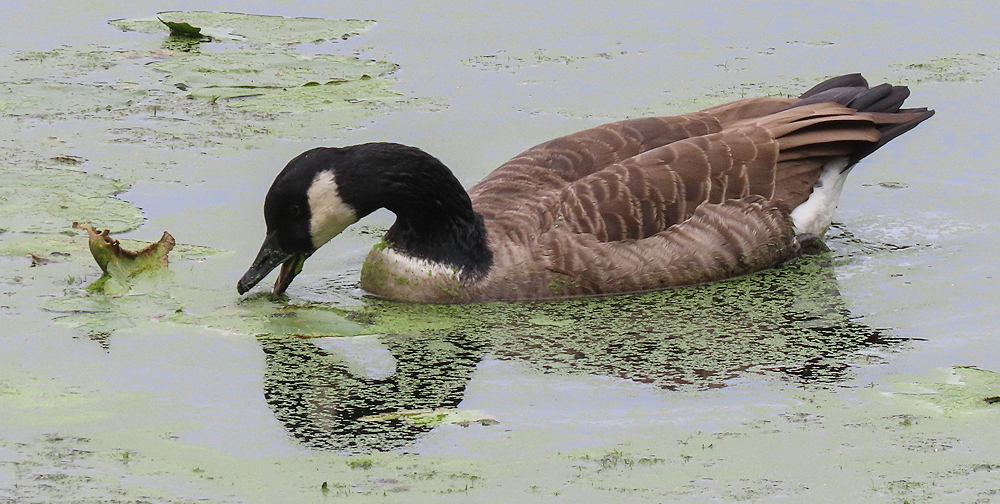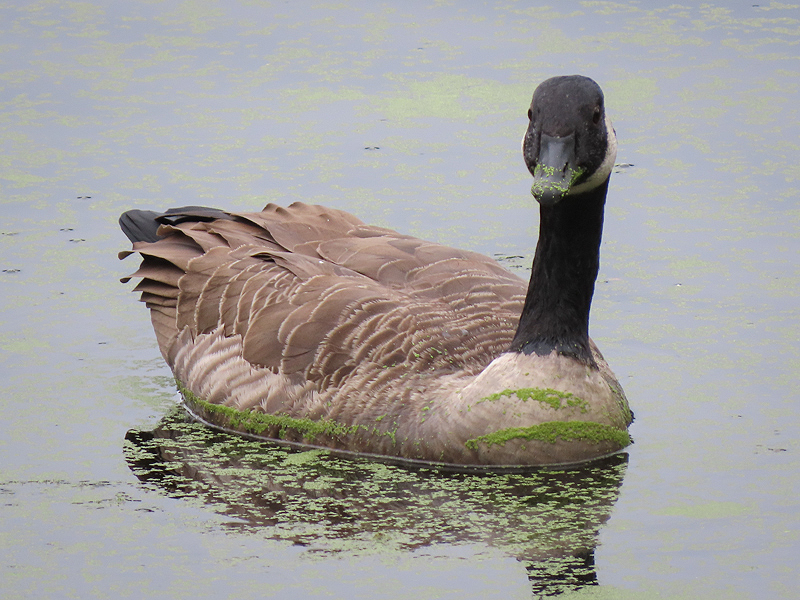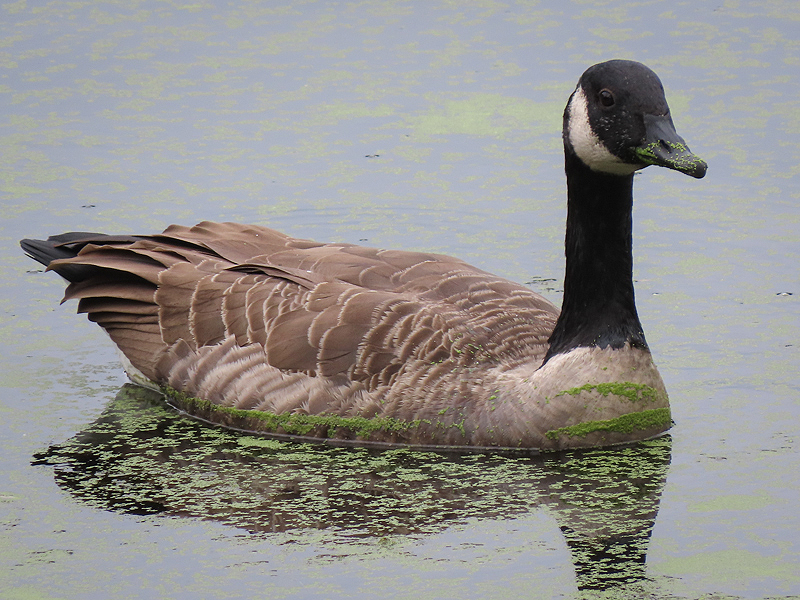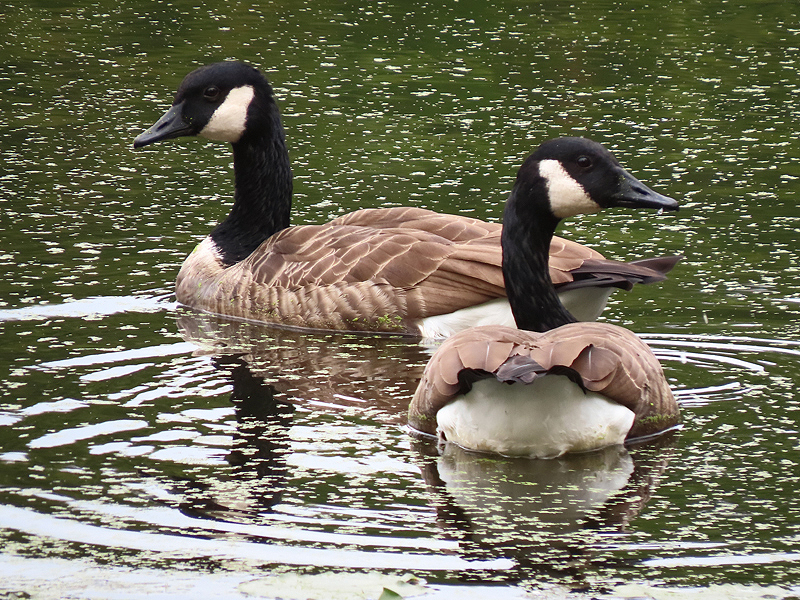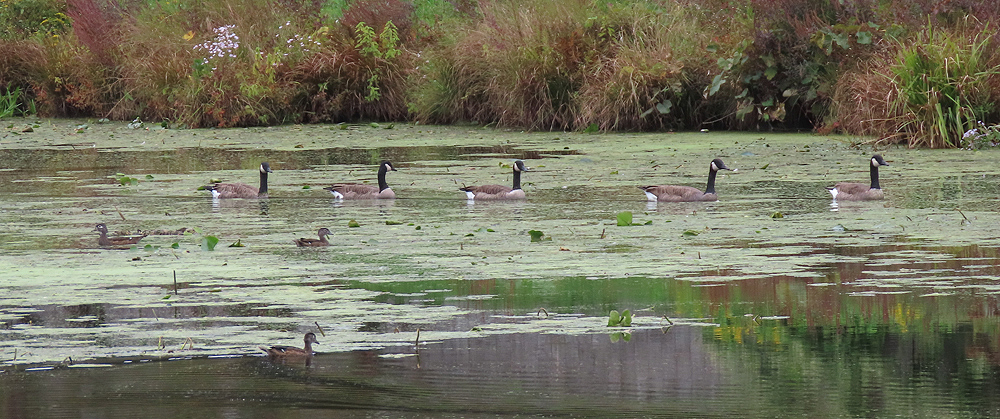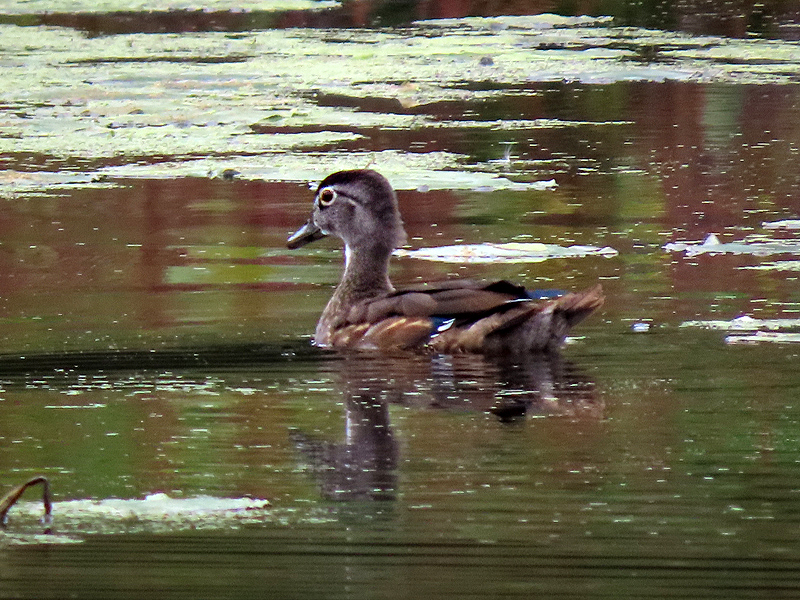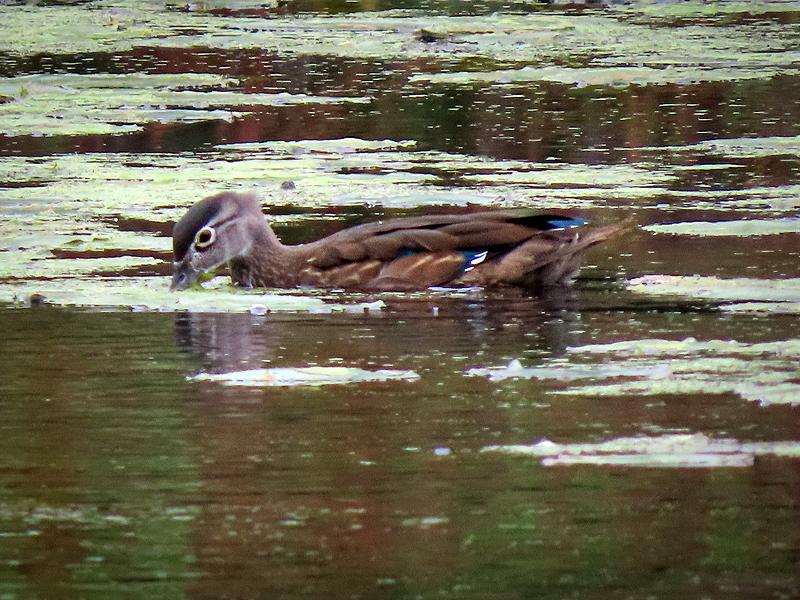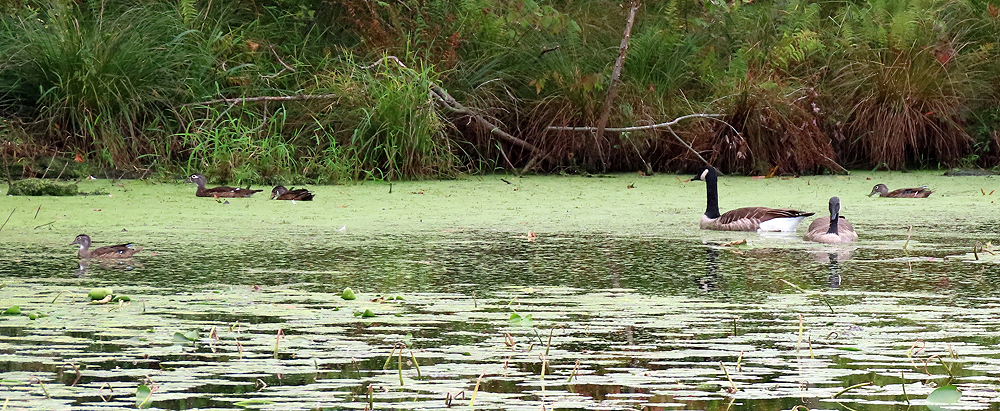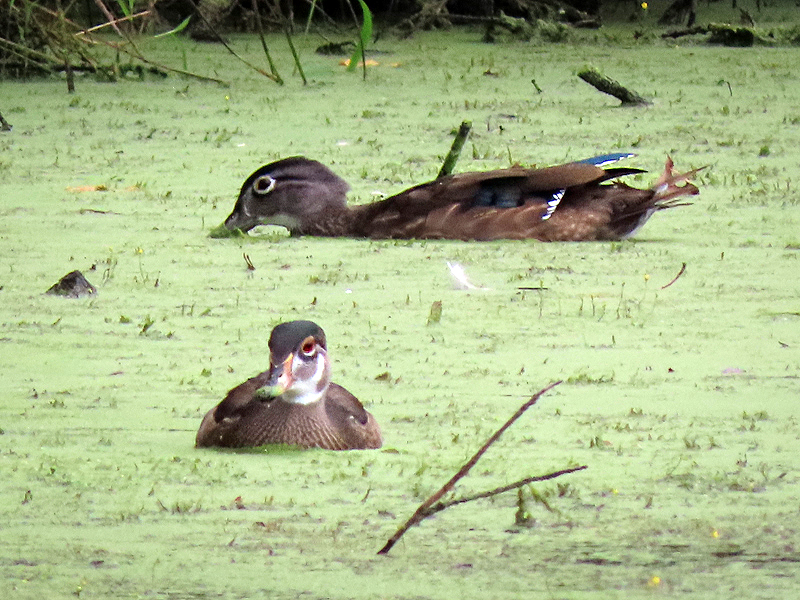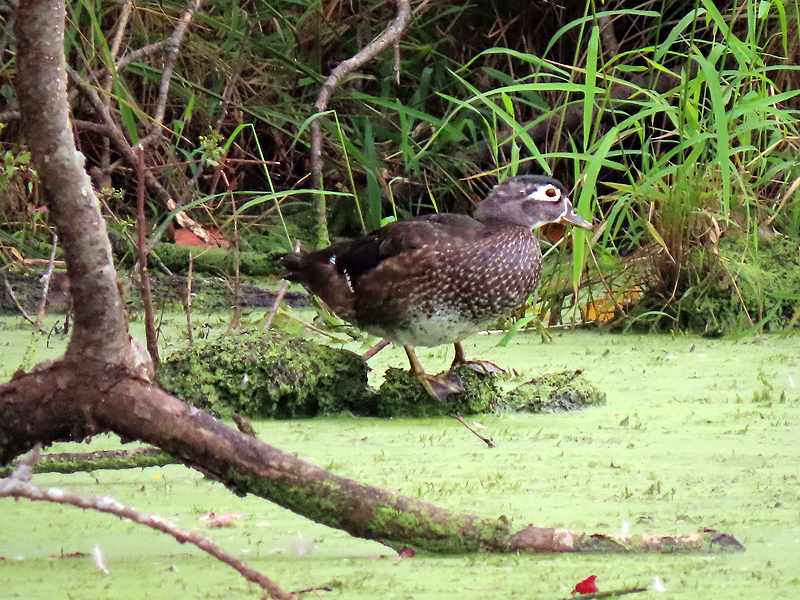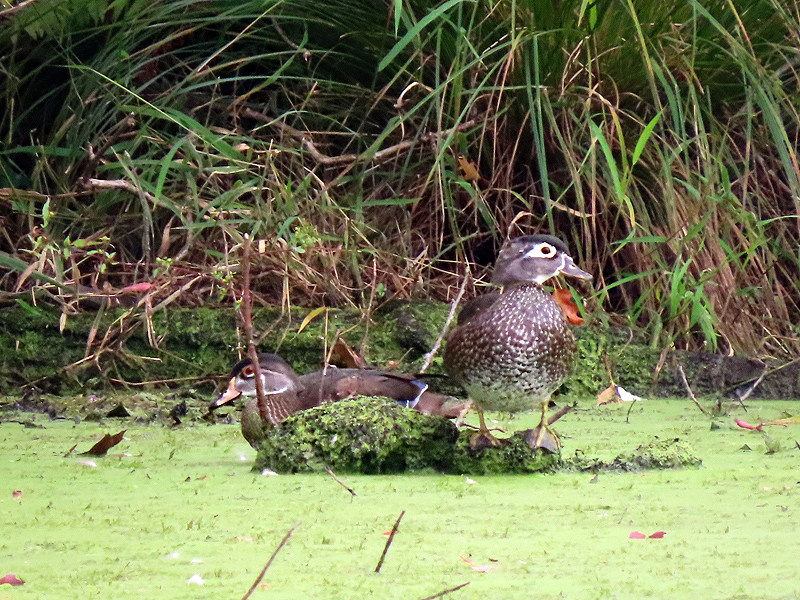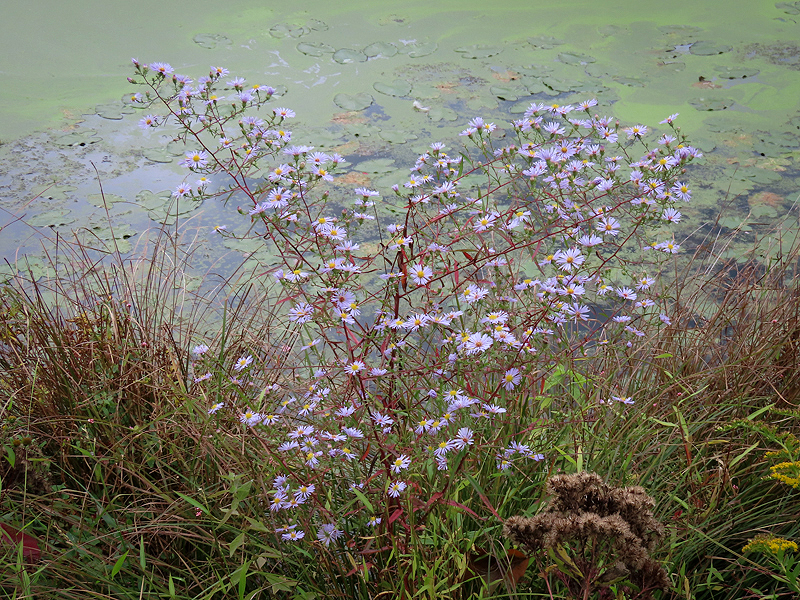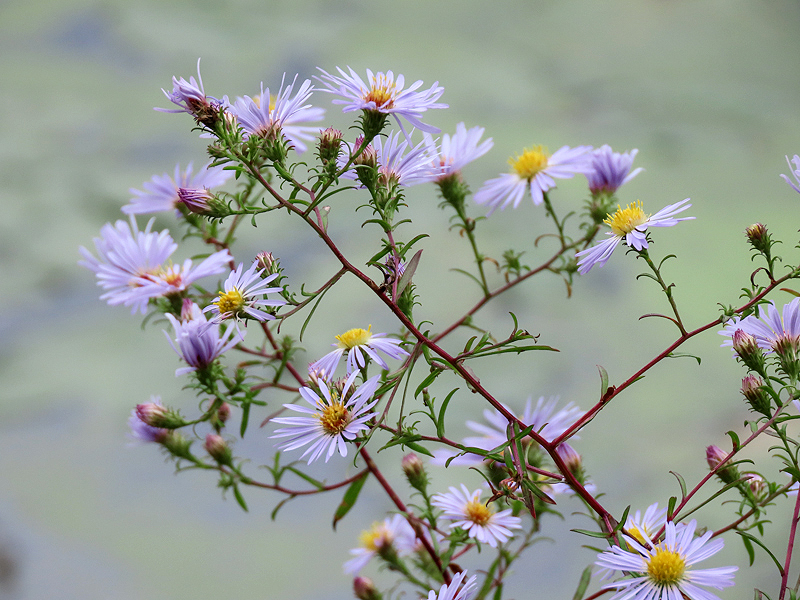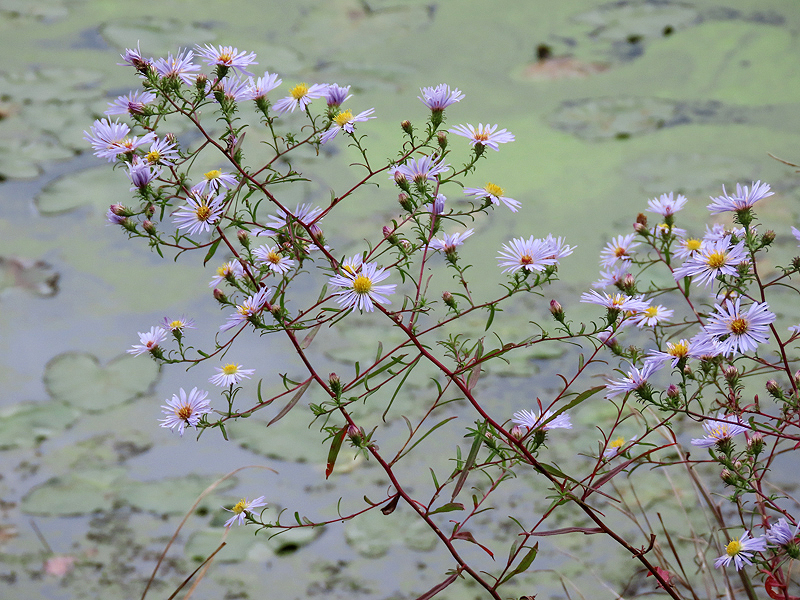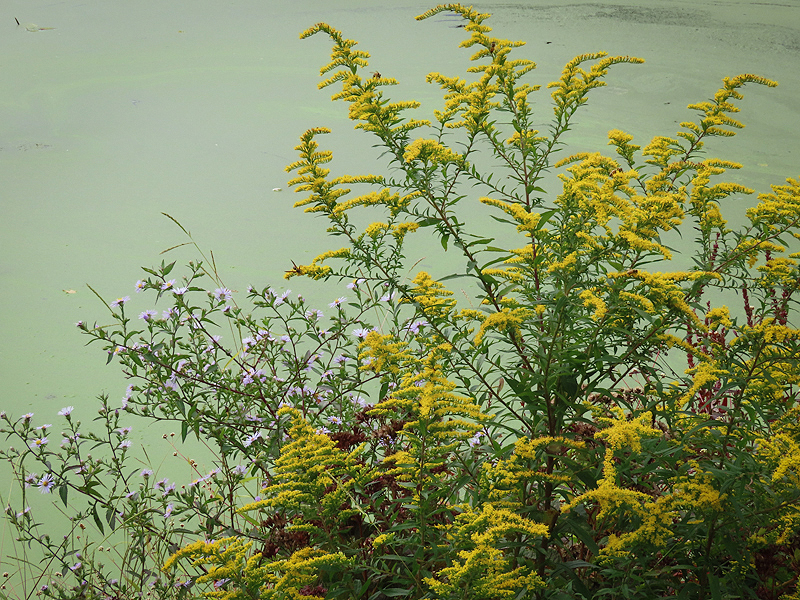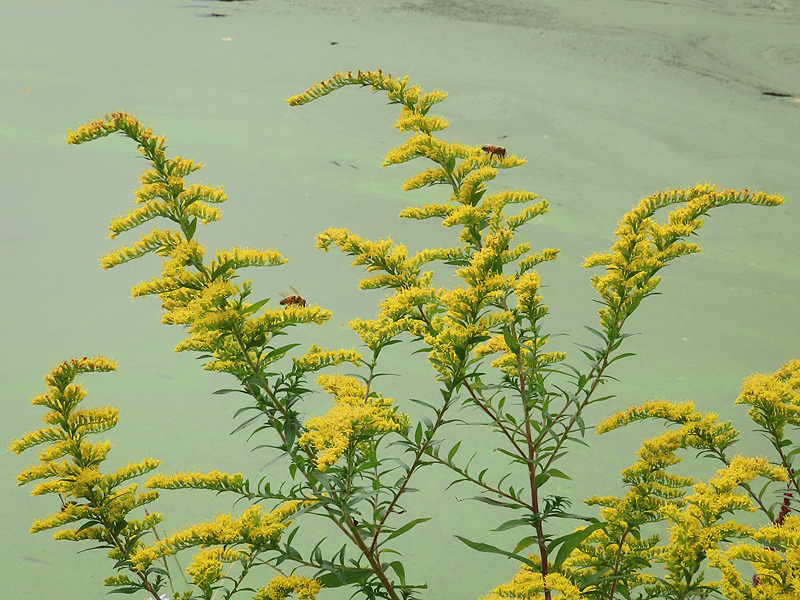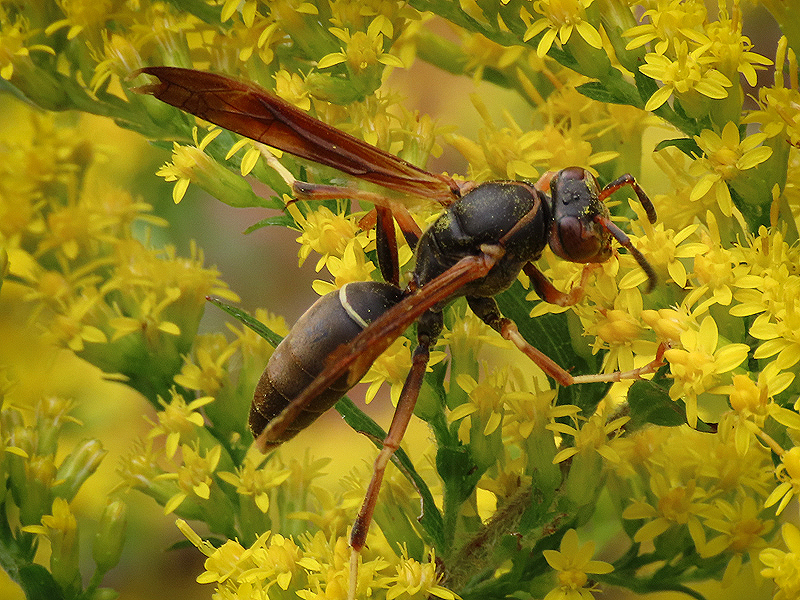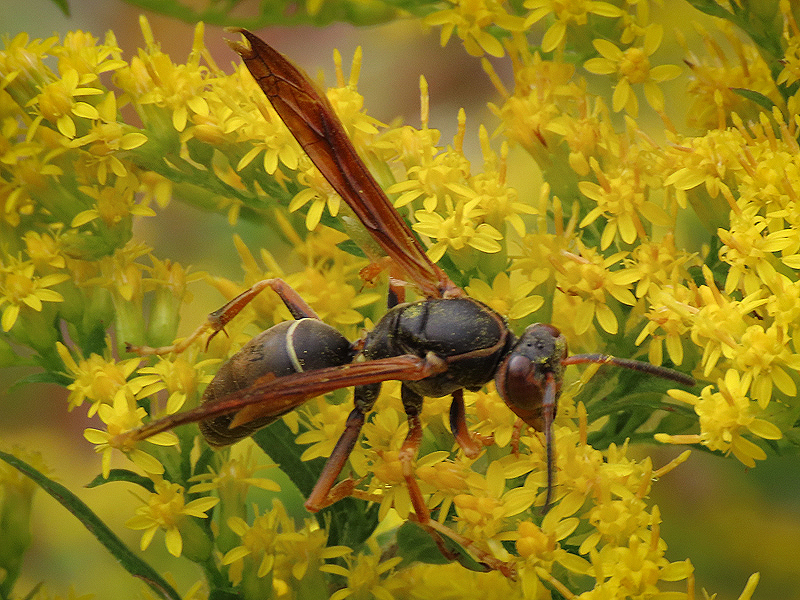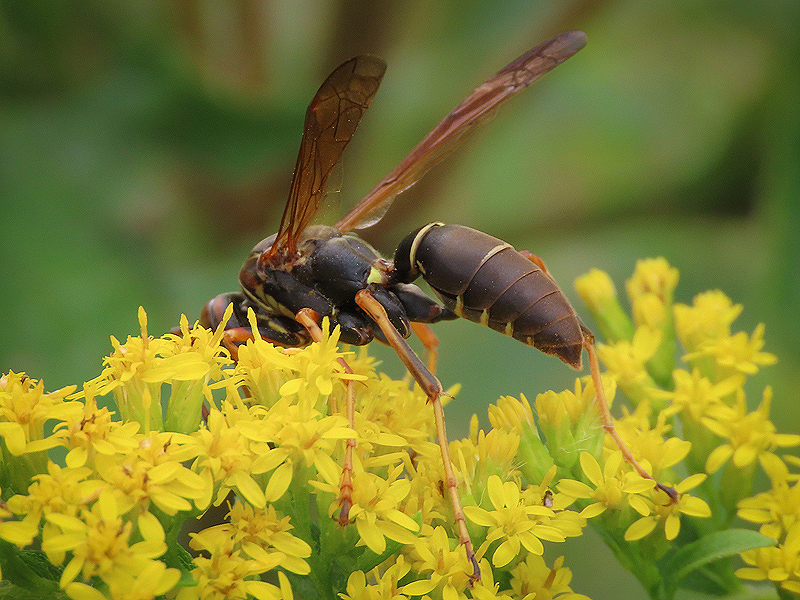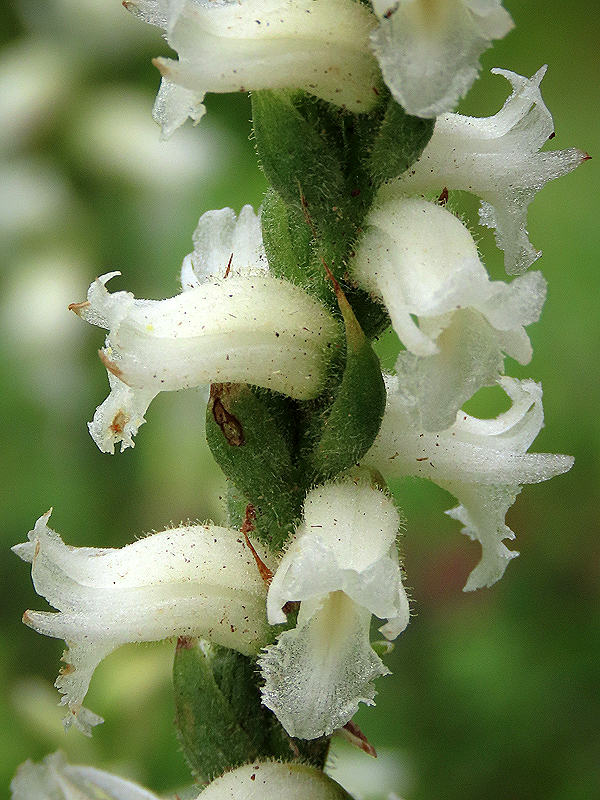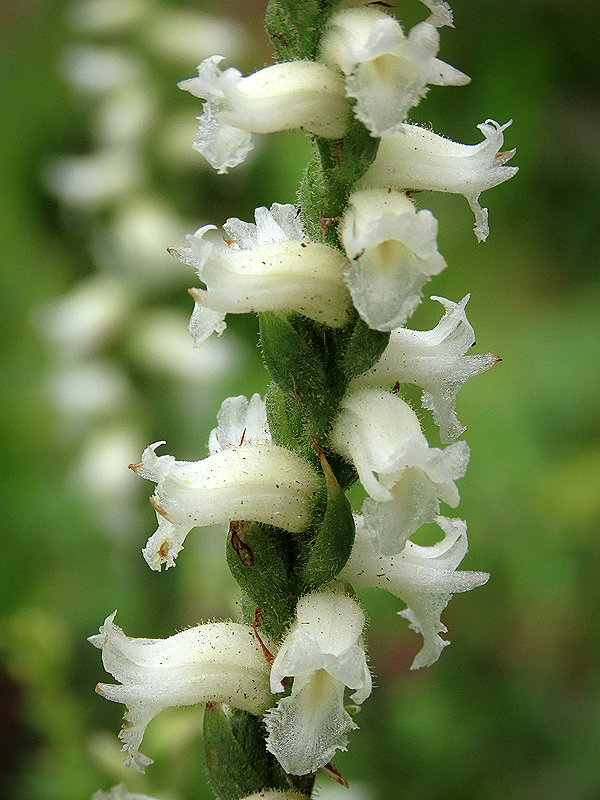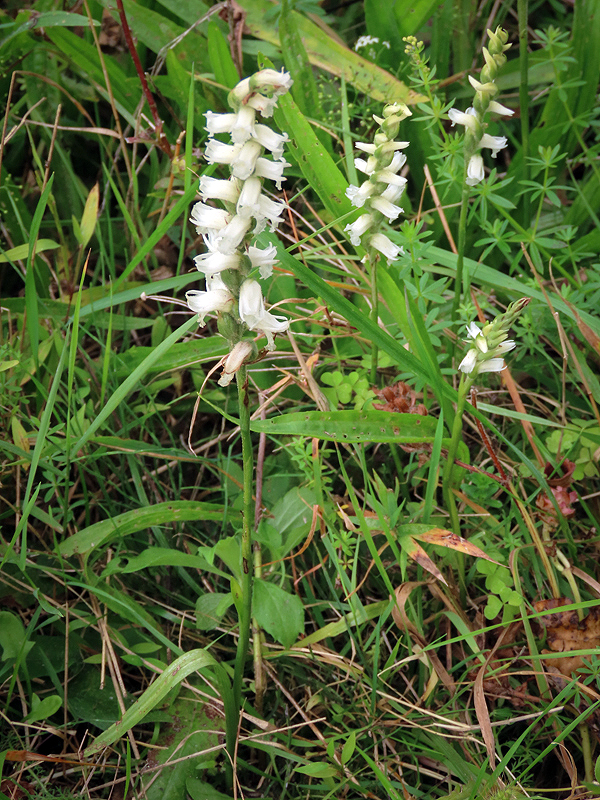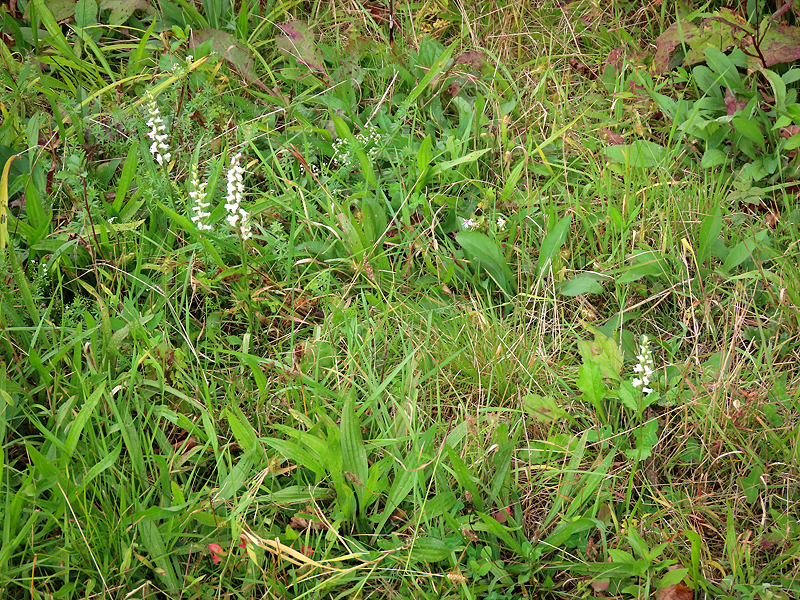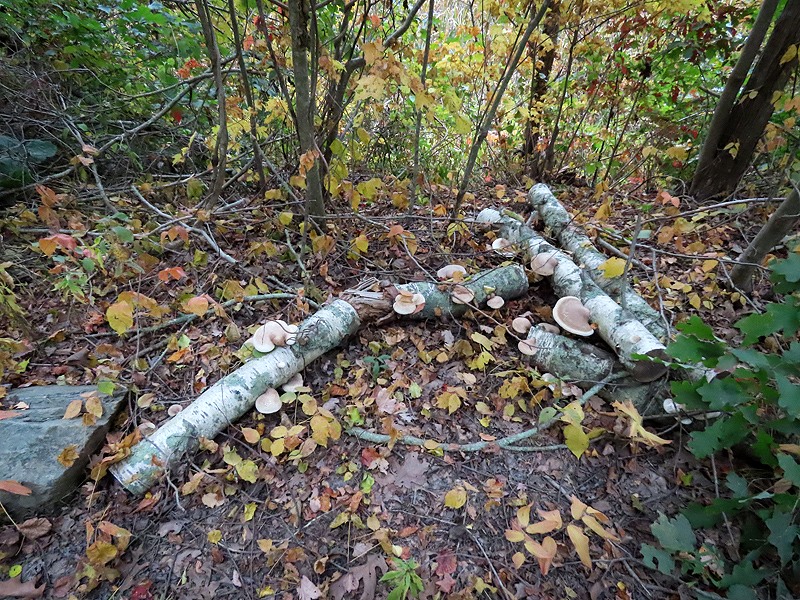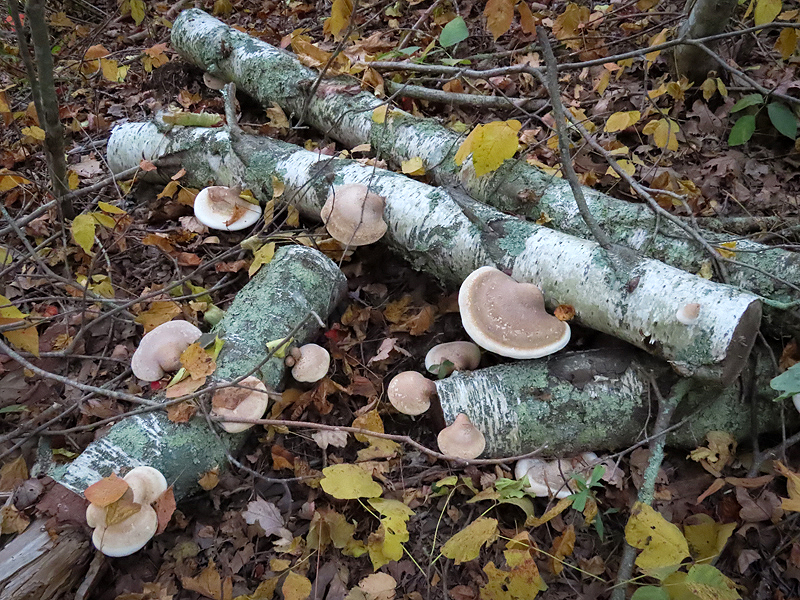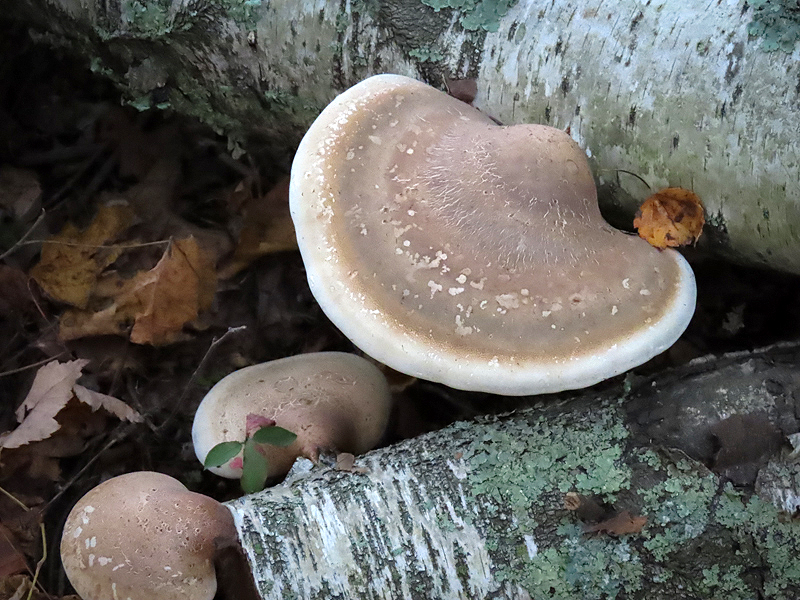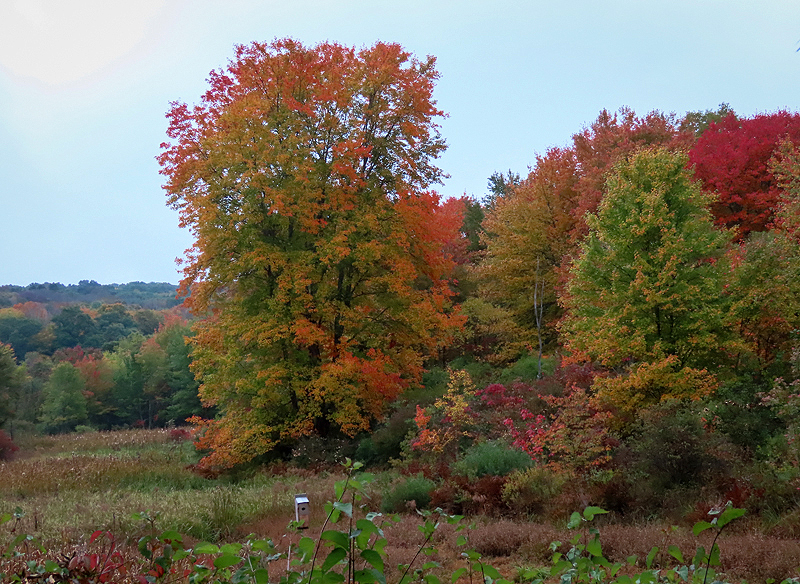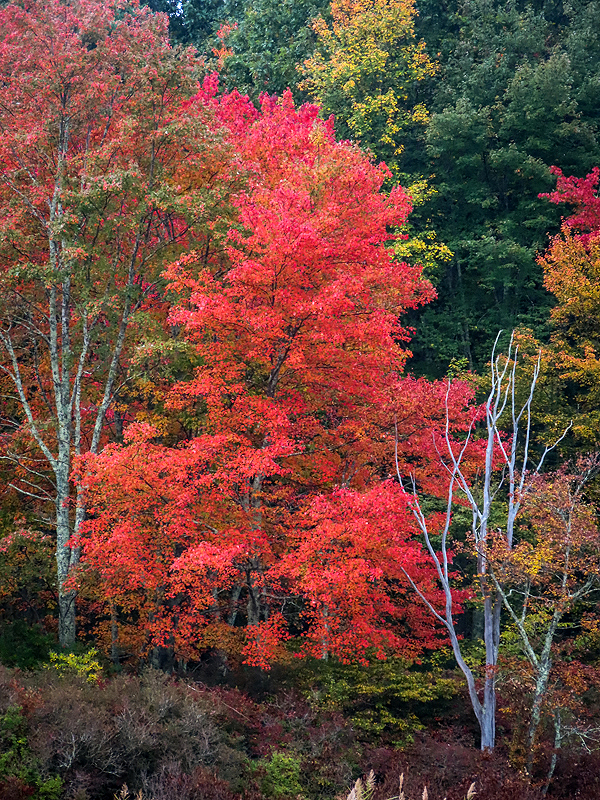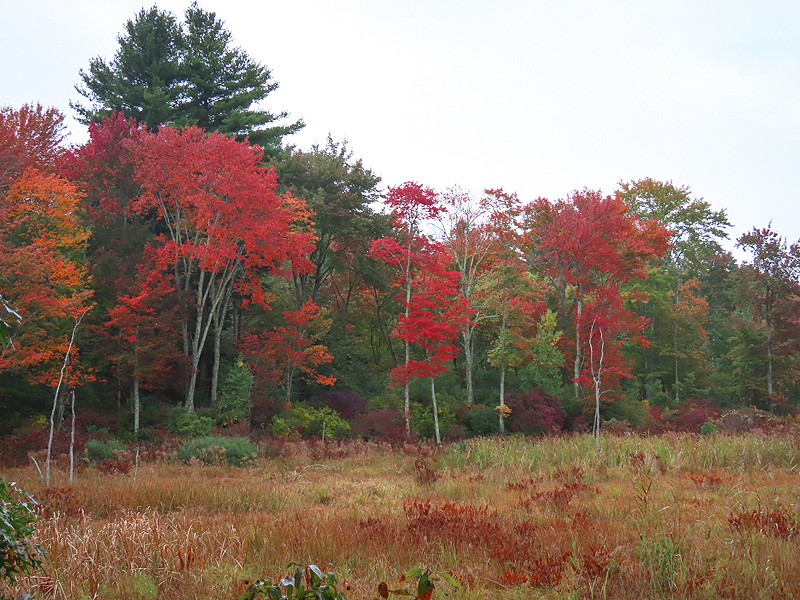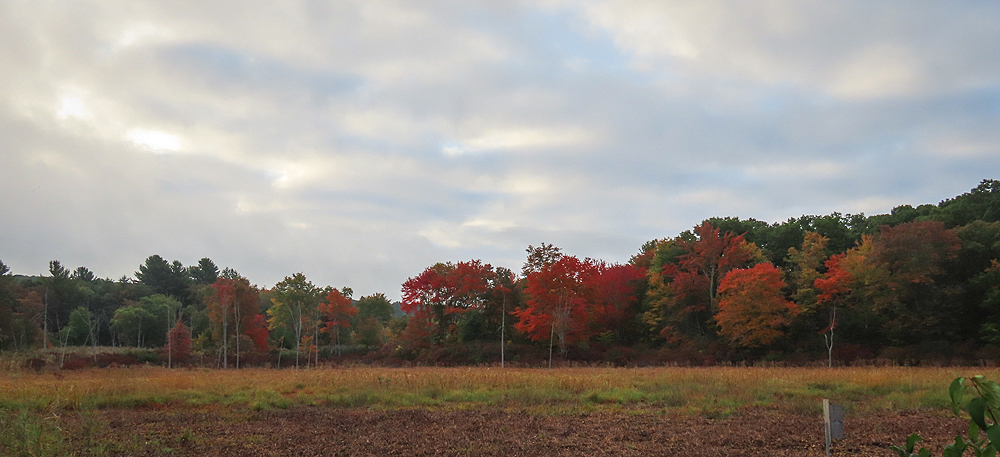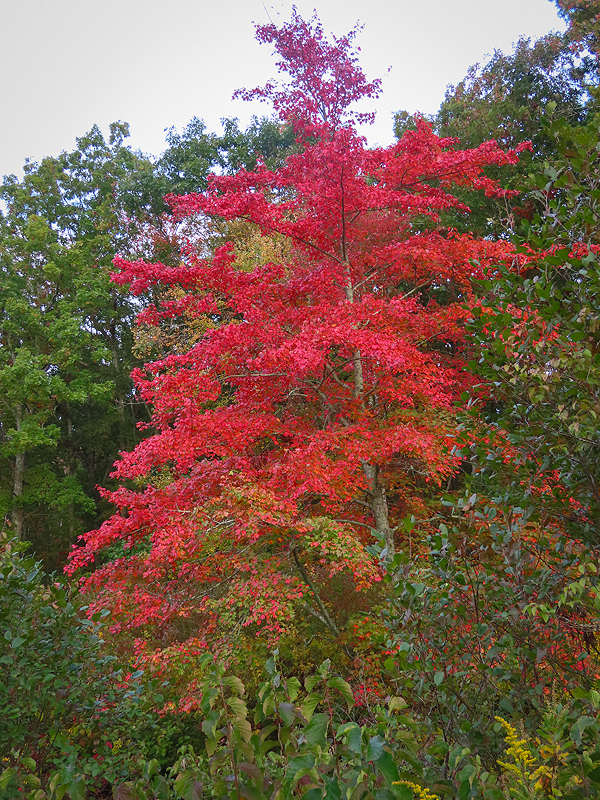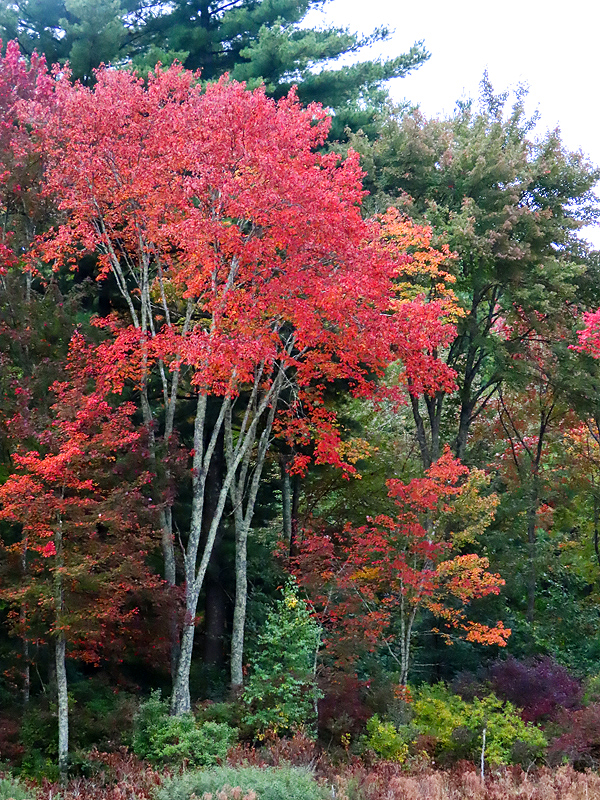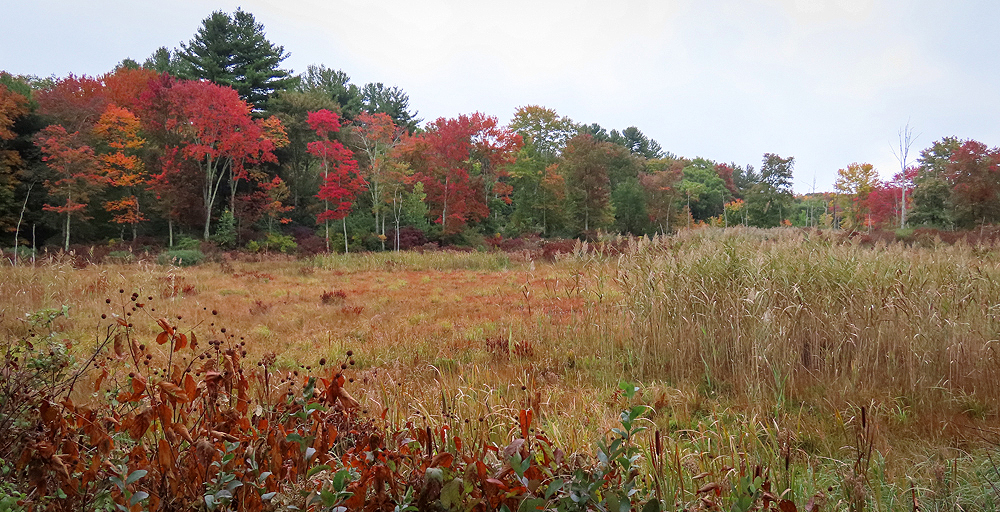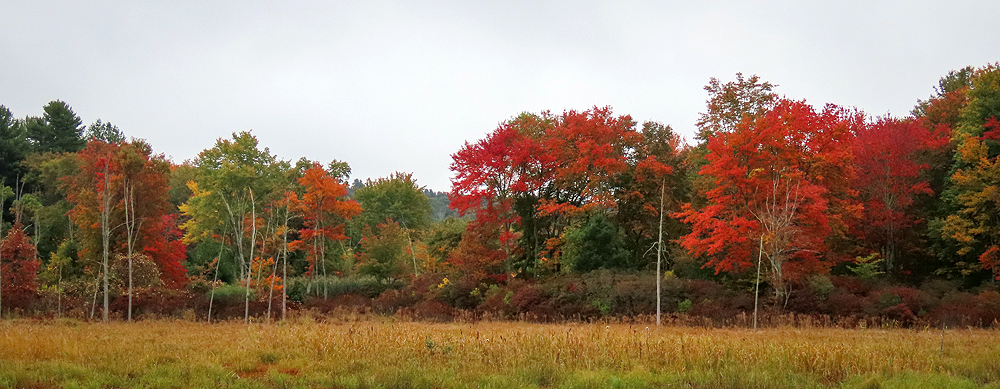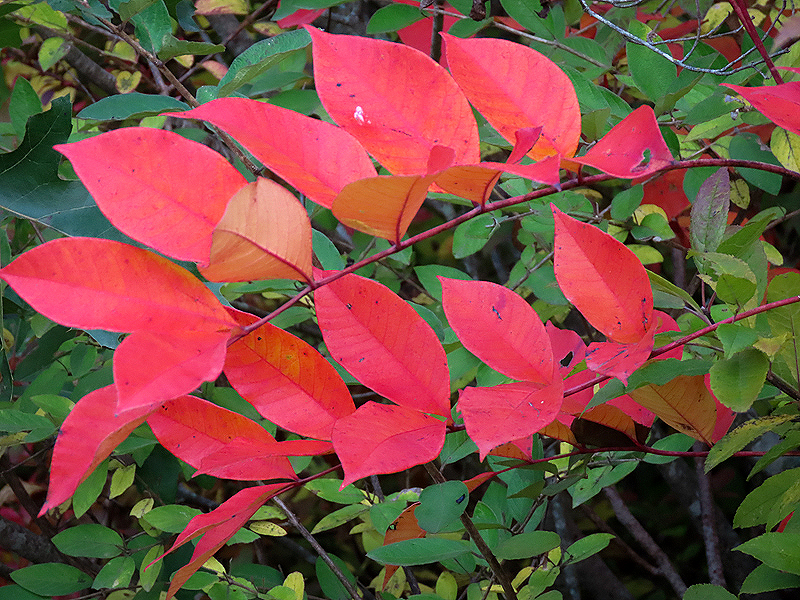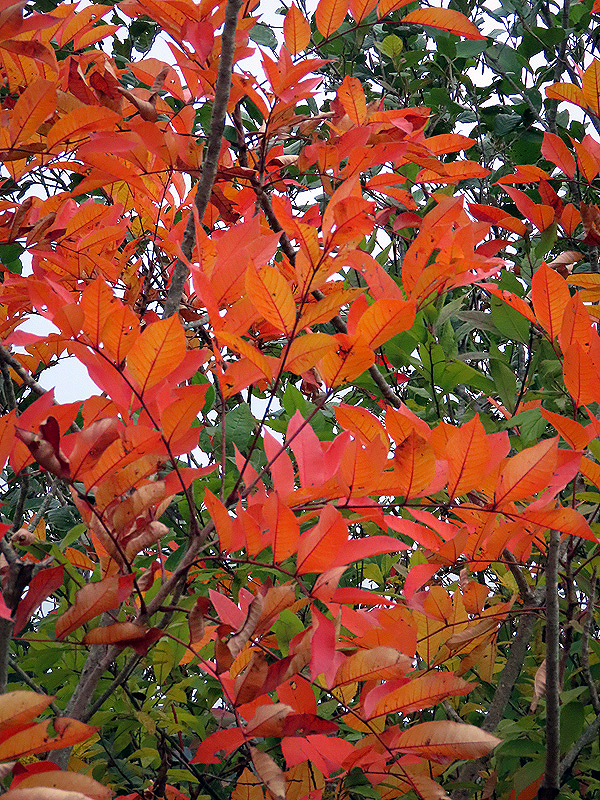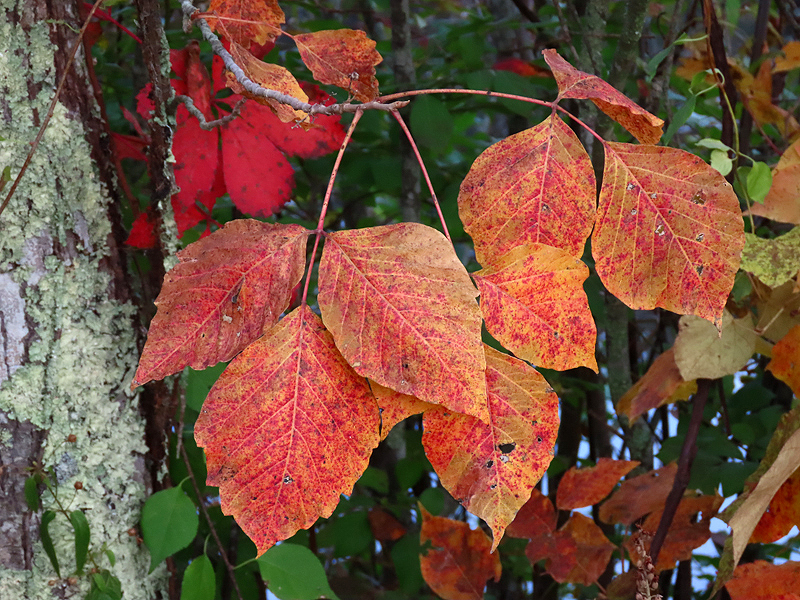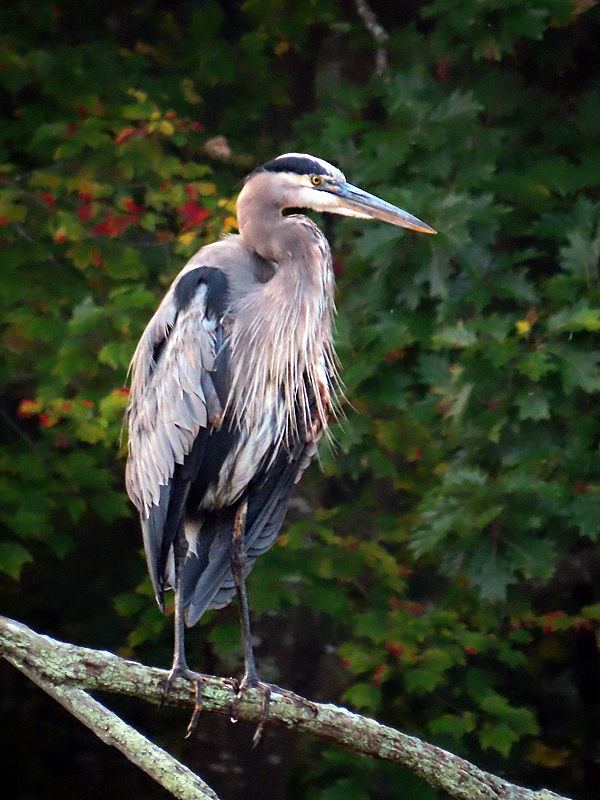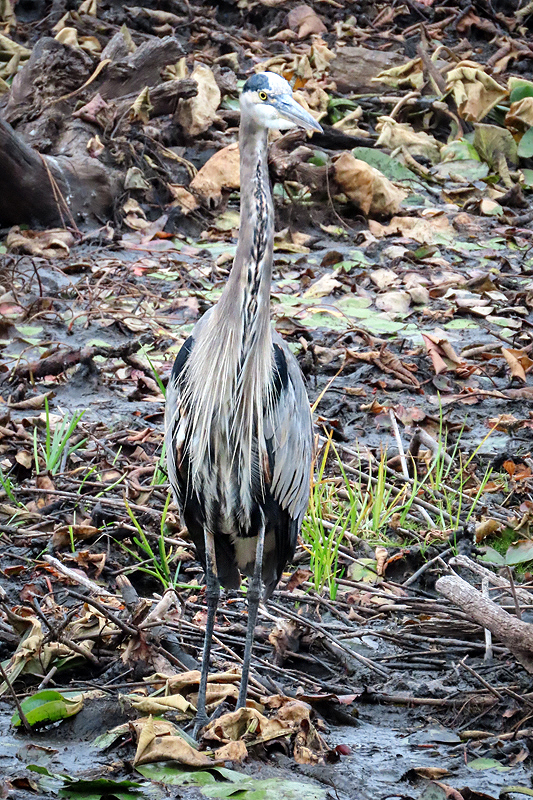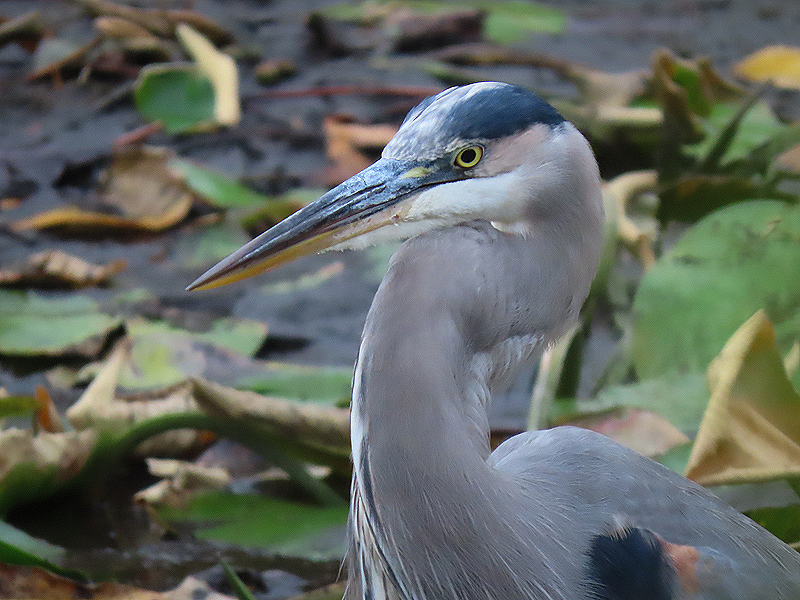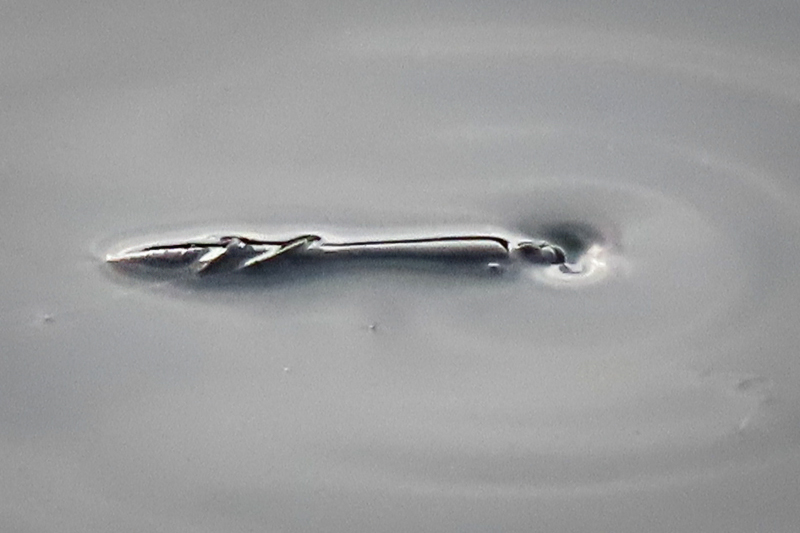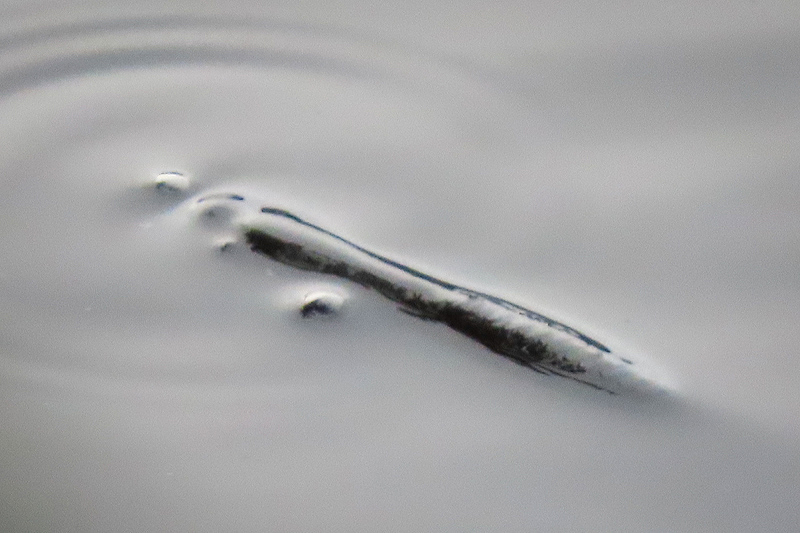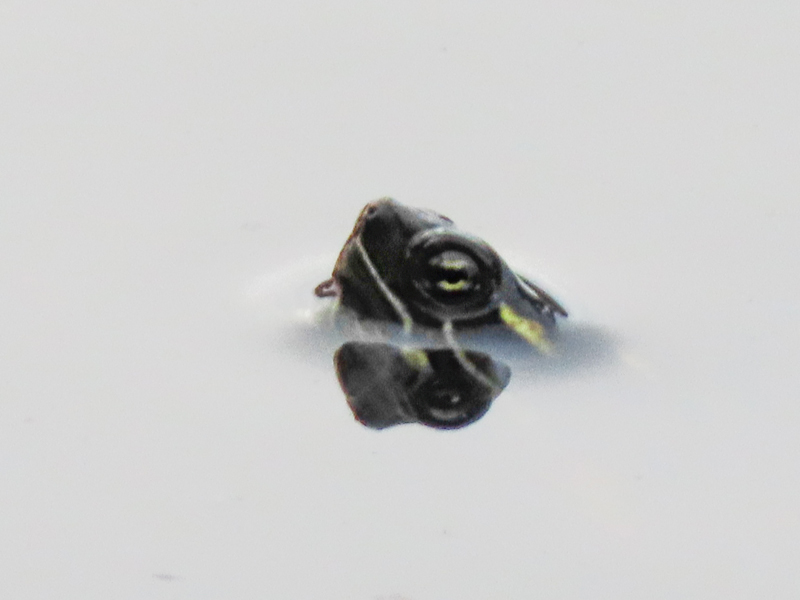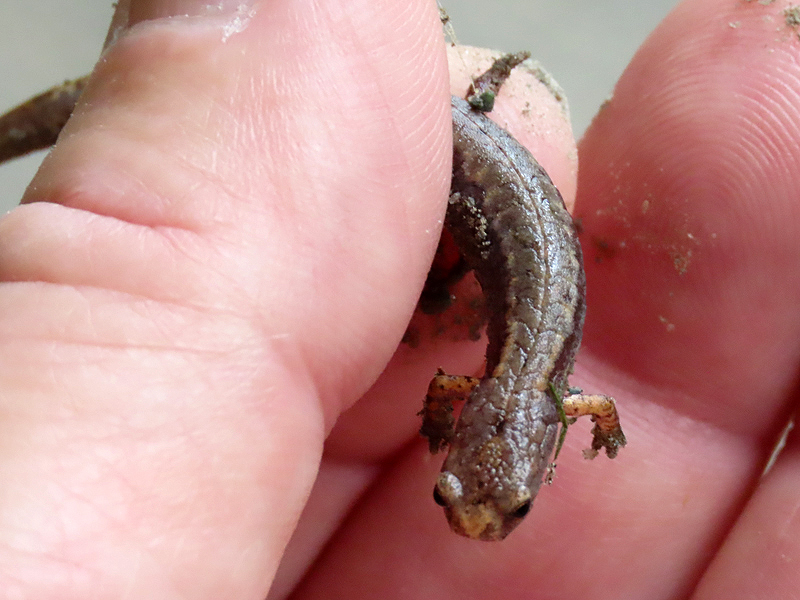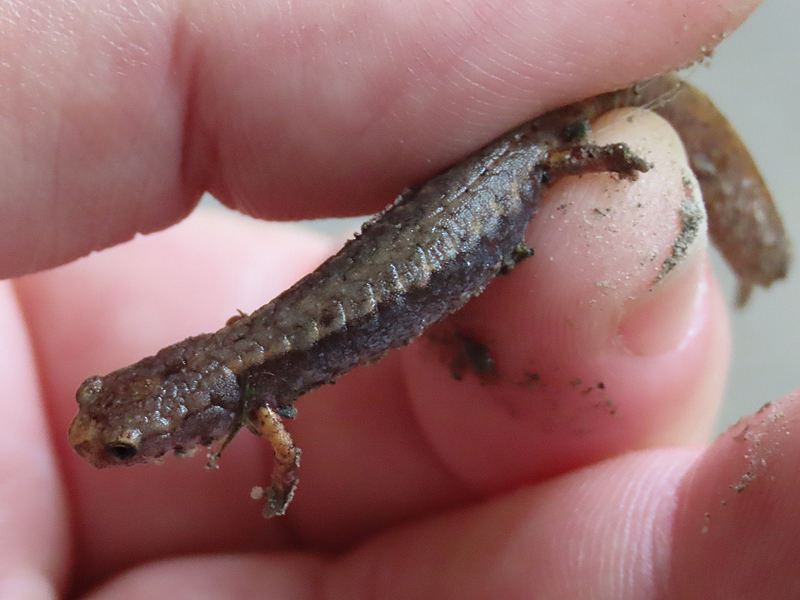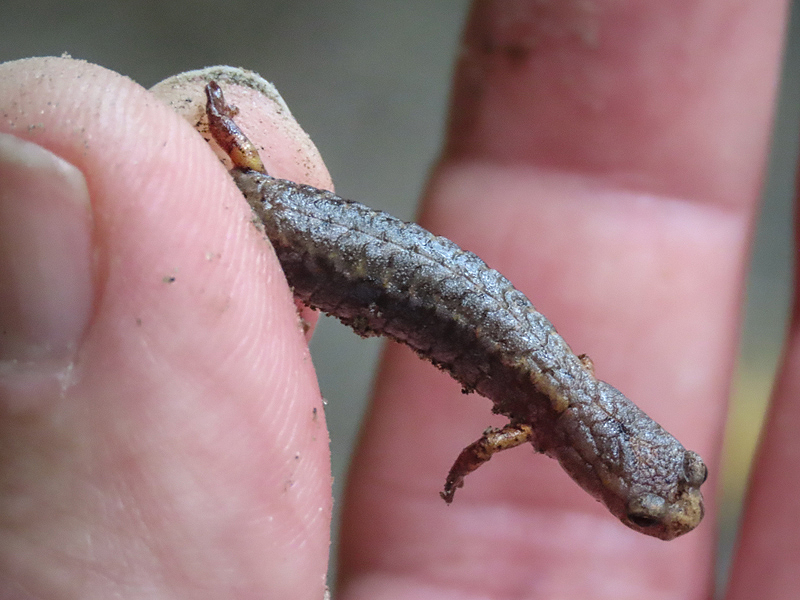Along the Air Line... 2020 - Fall, Part 2 The Air Line Trail in Eastern Connecticut - Stan Malcolm Photos |
HOME: Air Line... 2020 Pages Menu Stan's FlickR Albums |
September 26th, continued from the previous page. A short afternoon walk at Cranberry Bog. I saw ten Canada Geese (Branta canadensis). |
Note the washed up Duckweed (Lemna minor) on its breast and side. |
|
|
|
|
|
|
Five of the ten Canada Geese, and three Wood Ducks (Aix sponsa). Female at left. |
I think this is a young female. |
|
|
Foreground duck is definitely a male. Note the red eye (it will get redder). |
Teardrop eye marking means this is a female. |
|
Lots of Asters blooming. |
|
|
|
Plenty of Goldenrod (Solidago sp.) too. |
Honey Bees (Apis mellifera) were working it... |
...as were several Northern Paper Wasps (Polistes fuscatus). |
|
|
Some Spotted Knapweed (Centaurea maculosa) flowers still hanging on. |
Nodding Ladies'-tresses orchid (Spiranthes cernua). |
|
Each plant had a single basal leaf. |
I saw six plants, up from one (or none?) last year. But they're in a very vulnerable location - on the one hand likely to be mowed, or on the other hand crowded out by Sweet Peas and other plants. |
September 27th. Back at Raymond Brook Marsh. Birch Polypores (Piptoporus betulinus). |
|
|
A dreary morning, but bringing out good color on the foliage. |
|
|
|
|
|
|
|
|
|
|
A Great Blue Heron (Ardea herodius). |
The same bird, a little while later. |
A second Great Blue Heron. |
I still don't know what these are. Head at the right, the direction it was swimming. They dive when disturbed. About 3" long. The loops on this one's back seem to be strands of an aquatic plant. |
The back end (at right) looks segmented. |
Nearby, a Painted Turtle (Chrysemys picta) poked its head up from time to time. |
Not far from the Route 85 trailhead, an Eastern Red-backed Salamander (Plethodon cinereus) was crossing the dry surface. |
This is the "lead backed" alternate phenotype. |
I moved it to leaf litter in the direction it was headed. |
